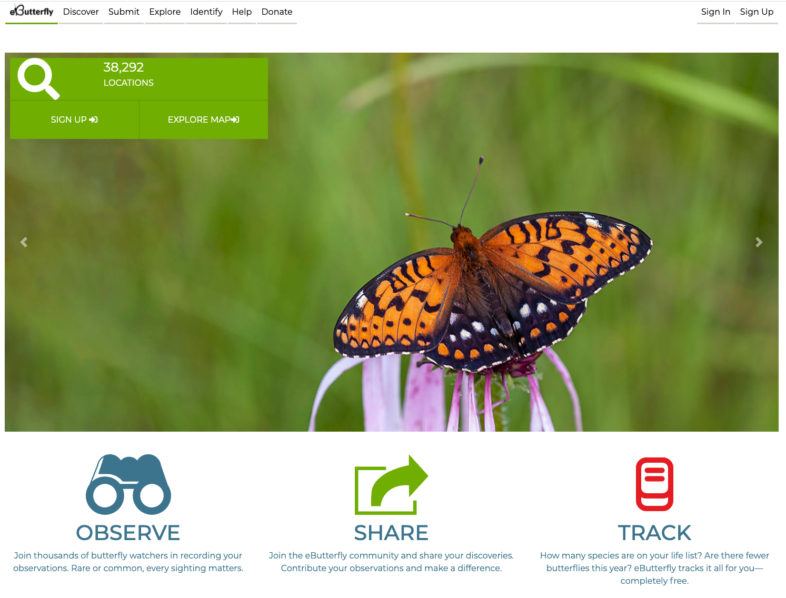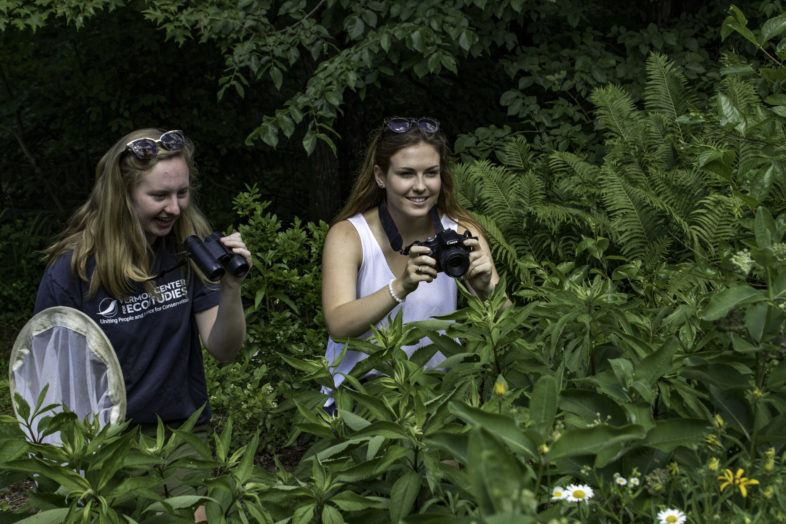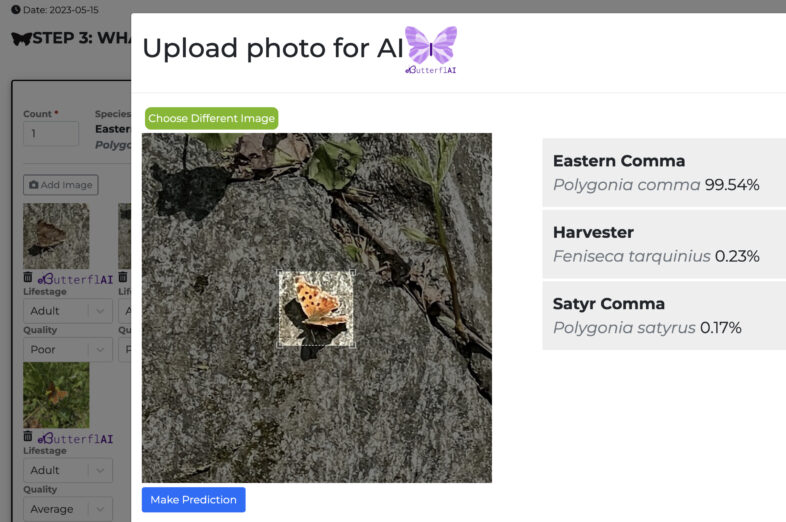 The Vermont Center for Ecostudies, Espace pour la vie in Montréal, and the University of Ottawa are proud to announce the worldwide launch of e-Butterfly. Thanks to the collaboration of an international team of biologists, entomologists, and computer systems specialists, the e-Butterfly.org platform offers high-performance tools allowing citizens everywhere to help inventory butterflies around the world.
The Vermont Center for Ecostudies, Espace pour la vie in Montréal, and the University of Ottawa are proud to announce the worldwide launch of e-Butterfly. Thanks to the collaboration of an international team of biologists, entomologists, and computer systems specialists, the e-Butterfly.org platform offers high-performance tools allowing citizens everywhere to help inventory butterflies around the world.
eButterfly: an essential tool for taking the pulse of butterfly populations
A veritable gold mine for scientists, its database consists of nearly 20,000 butterfly species, meaning all those known at the present date. Whether you’re a novice or a specialist, the eButterfly community science platform allows you to submit sightings of butterflies from everywhere, resulting in the rapid collection of large volumes of observations—invaluable data for scientists surveying the impact of climate change on butterfly populations. The platform, moreover, allows for the organization of great quantities of data based on the distribution, number, and diversity of butterflies in the world, which is essential for research. Ultimately, global, crowd-sourced community science projects like eButterfly give scientists access to more data than they alone could collect and serve a critical role in monitoring and mitigating the insect biodiversity crisis.
“Every time butterfly watchers raise binoculars and cameras to record a butterfly sighting, they collect important data,” states Dr. Rodrigo Solis Sosa, eButterfly Human Network and Data Coordinator. “Recording the number, date, and location of each butterfly, no matter how common or rare, may seem trivial, even repetitive—but this detailed information is invaluable to science and conservation.”
“Besides being relatively simple to follow,” explains Maxim Larrivée, cofounder of eButterfly and director of the Insectarium de Montréal, one of the five Espace pour la vie museums, “this methodology makes it possible to gather essential data for monitoring butterflies, from local to global scales, relating to their populations, to phenology or to impacts of climate change on their biodiversity.”
“We’re creating a community of people who are collaborating with scientists to survey and conserve butterfly populations,” states Kent McFarland, conservation biologist at the Vermont Center for Ecostudies and co-founder of eButterfly. “It’s the best of the Internet combined with the rigors of science.”
Powerful artificial-intelligence tool
eButterfly also uses the most up-to-date technologies to identify butterflies from around the world. A team from Mila – Quebec Artificial Intelligence Institute and its partners have created a state-of-the-art image-recognition algorithm that can identify most of the world’s butterflies based on their location and an image uploaded to eButterfly. The algorithm was fed millions of photos of butterflies from a number of sources so that it can recognize the patterns characteristic of each species. After two years of development and tests, the algorithm delivers outstanding performance.
“AI algorithms are an excellent way of rapidly identifying a lot of photos,” said David Rolnick, Assistant Professor in the School of Computer Service at McGill University and at Mila. “Scientists can now devote more time to the rare species that require specialized knowledge.”
A project made possible thanks to collaborative work
eButterfly is an international project devoted to research, conservation, and education supported by the following organizations: Vermont Center for Ecostudies; Espace pour la vie, a service of Ville de Montréal; and University of Ottawa.
New to eButterfly?
Visit our Help pages to quickly get started using eButterfly. There’s a Quick Start Guide that takes you through each step when entering a butterfly checklist. Learn about our crowd-sourced data vetting system, our identification tool, and how you can help verify eButterfly data too. And learn how eButterfly helps you track your life, year, and month lists automatically.




Congratulations to Kent and all the hardworking scientists who developed this program.